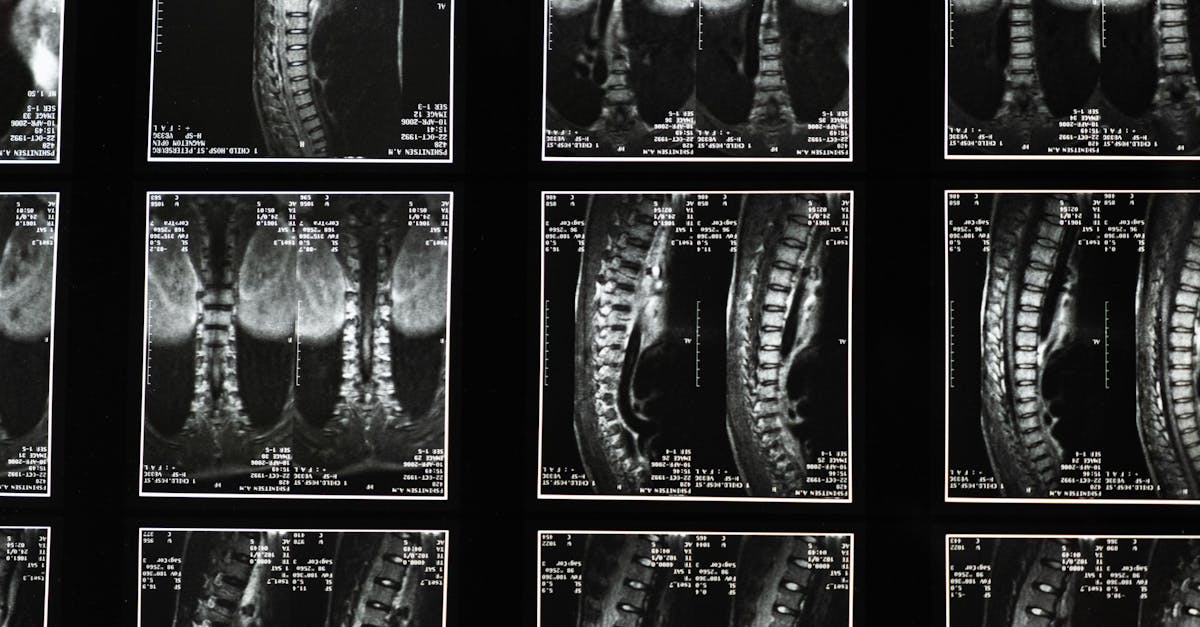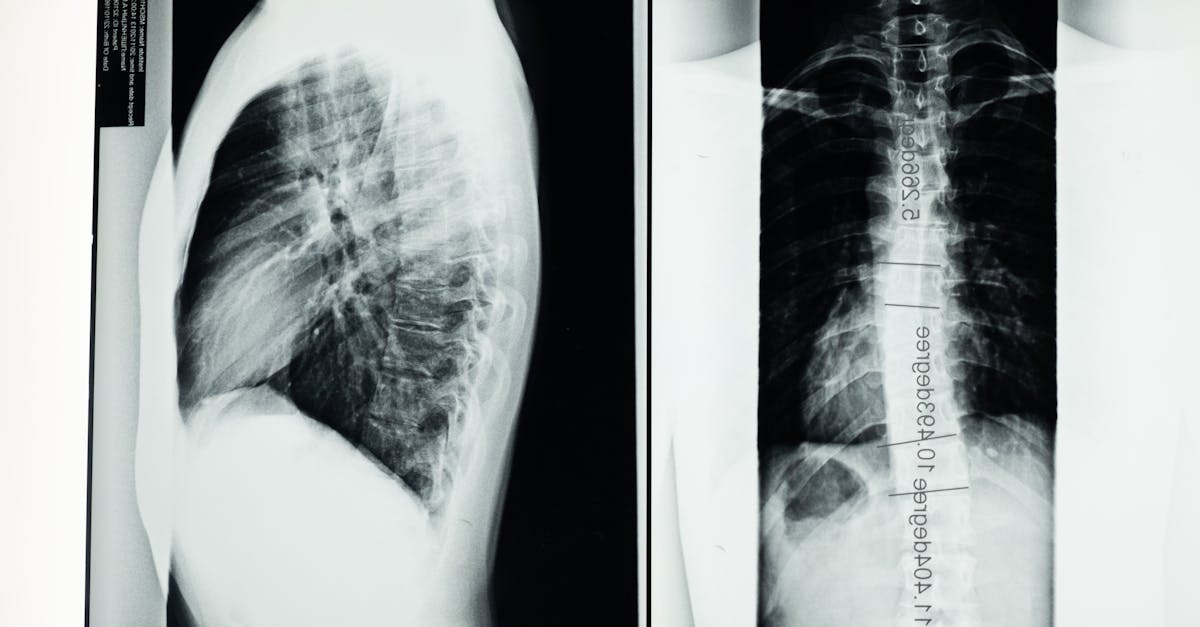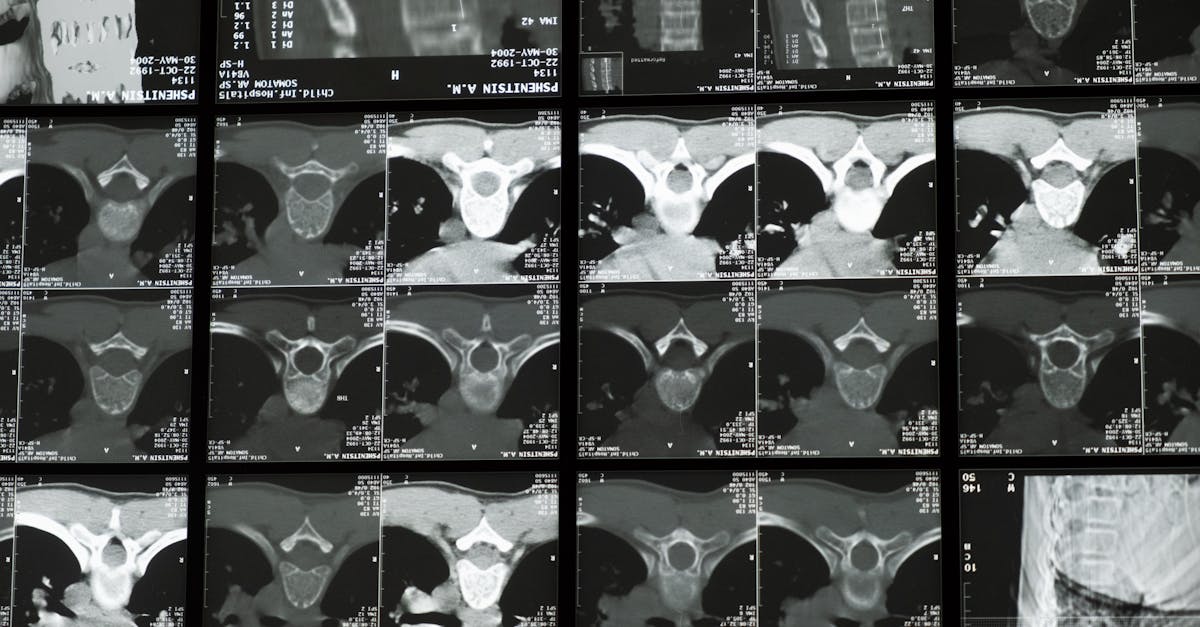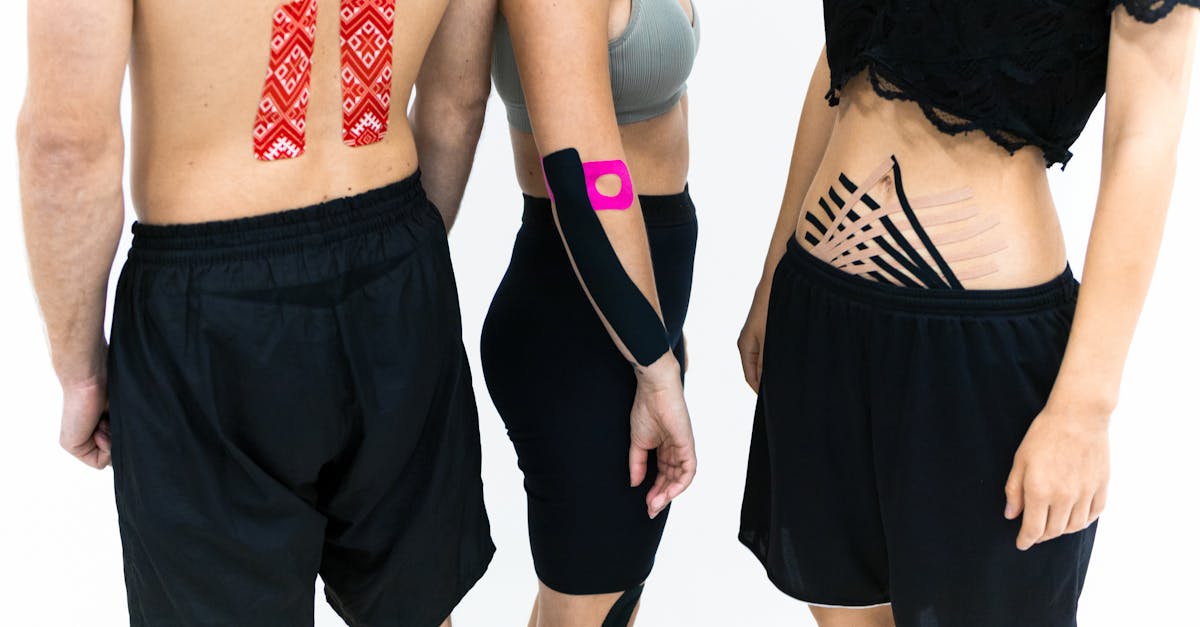|
In Short, exploring non-invasive approaches to scoliosis prevention encompasses methods aimed at halting the progression of spinal curvature without resorting to surgery. These strategies, including physical therapy, bracing, and the Schroth Method, empower individuals to enhance their posture and spinal health. By strengthening back muscles and promoting healthier alignment, these interventions effectively reduce chronic discomfort and improve mobility. Importantly, they are accessible at locations such as Pulse Align clinics, making it easier for patients to benefit from a pain-free experience that is tailored to their unique needs. |
Non-invasive approaches to scoliosis prevention include a variety of strategies aimed at managing and reducing the risk of this spinal condition. Key methods involve physical therapy focused on strengthening spinal muscles and improving posture, alongside the use of bracing for growing children. Innovative techniques such as the Schroth Method enhance individualized care, while lifestyle measures like regular check-ups, tailored exercises, and nutritional support contribute to a holistic approach to spinal health. These interventions not only aim to halt the progression of scoliosis but also promote overall well-being.

Discover the Pulse Align Difference: A Gentle Path to Wellness
At Pulse Align, we understand that well-being is rooted in balance and posture. Our innovative, non-invasive approach utilizes gentle, imperceptible pulses to encourage the body’s natural ability to recalibrate its muscle tone and restore posture. Through this gentle stimulation, we assist clients in alleviating tension and discomfort while promoting overall harmony in their movements.
Emphasizing Natural Recalibration
Unlike traditional methods that focus on specific discomforts, Pulse Align emphasizes the body’s innate ability to recalibrate itself. Our techniques foster a connection between mind and body, allowing clients to experience improved comfort and posture naturally. This holistic approach aligns with our philosophy that wellness is a journey, enhancing the body’s functions without direct interference with any particular symptoms.
Personalized Wellness Journeys
Client testimonials illustrate the transformative experiences achieved at Pulse Align. Many have reported notable improvements in neck and back tension and overall postural balance, contributing to an enhanced sense of well-being. Families, including children and pregnant women, have found our services not only effective but also nurturing, as we cater to their unique needs with personalized care plans.
Your Invitation to Explore
We invite you to visit the Pulse Align website to learn more about our services and how they can support you and your family on your wellness journey. With various clinic locations, including La Prairie, Mont-Royal, and Terrebonne, you can easily find a Pulse Align clinic nearby. Discover how our gentle and non-invasive methods can enhance your overall well-being while working harmoniously alongside your existing healthcare services. Book your consultation today and experience the Pulse Align difference for yourself!
Medical Disclaimer
The information and advice provided by Pulse Align complement but do not replace medical care. Clients should maintain regular consultations with their healthcare professionals for any general health concerns.
- Physical Therapy: Tailored exercises to strengthen back muscles and improve posture.
- Bracing: Supportive devices for children to prevent curvature progression during growth.
- Schroth Method: Customized physical therapy focusing on specific spinal curvature corrections.
- Observation: Regular assessments for early detection of scoliosis signs.
- Nutrition: Diet rich in vitamins and minerals to support bone health.
- Customized Exercise Plans: Individualized workouts aimed at enhancing muscle tone and flexibility.
- Mindfulness Practices: Promotes awareness of body mechanics to foster better posture.
- Regular Check-Ups: Frequent consultations with healthcare professionals to monitor progress.

Scoliosis, characterized by an abnormal curvature of the spine, can pose significant health challenges if left unchecked. Thankfully, a range of non-invasive approaches have emerged, focusing on prevention rather than surgical intervention. This article delves into various strategies, including physical therapy, bracing, tailored exercise plans, and the supportive role of nutrition, to empower individuals in managing their spinal health effectively.
Physical Therapy as a Preventive Measure
Physical therapy plays a vital role in preventing scoliosis by enhancing the strength of the muscles surrounding the spine and improving overall posture. Tailored therapy programs focus on exercises that facilitate muscle tone improvement, promoting better alignment and stability. Patients can benefit from individualized regimens that include core strengthening, stretching, and postural awareness techniques. These practices not only alleviate discomfort but also serve to build resilience against spinal deformities.
Bracing for Optimal Support
Bracing is primarily utilized during growth spurts in children and adolescents to prevent curvature progression. This non-surgical intervention can offer substantial support by providing controlled pressure on the spine. It encourages proper alignment during critical developmental stages, making adherence to the recommended wear duration essential. Healthcare professionals personalize the type and fit of the brace to ensure effectiveness, enhancing the overall well-being of the growing individual.
Customized Exercise Plans
Engaging in customized exercise plans can significantly impact scoliosis management. Specifically designed workouts, involving methods such as Pilates and yoga, can empower individuals to strengthen their core, enhance flexibility, and improve balance. These exercises promote a heightened awareness of body mechanics—critical for preventing postural imbalances that can lead to scoliosis. Such proactive practices are essential for anyone aiming to maintain a healthy spine.
Nutrition’s Role in Spinal Health
Nutrition is often overlooked in the context of scoliosis prevention. However, a balanced diet rich in essential nutrients can support bone strength and overall growth. Incorporating whole foods, including fruits, vegetables, lean proteins, and healthy fats, can bolster bone density and muscle strength. Regular consultations with healthcare professionals can guide dietary adjustments tailored to individual needs, ensuring optimal spinal health.
Mindfulness and Posture Awareness
Practicing posture awareness through mindfulness techniques can significantly influence spinal alignment. By fostering a culture of awareness regarding body mechanics, individuals can develop habits that support healthier posture throughout their daily activities. Instructors and therapists can guide individuals in recognizing their body’s alignment, encouraging them to make conscious adjustments that align with the body’s natural mechanics, thereby supporting spinal integrity.
The Integrative Pulse Align Approach
At Pulse Align, the emphasis on a holistic and technology-driven approach complements these non-invasive interventions. By focusing on neuromuscular recalibration and natural balance, our methods uniquely contribute to improved posture and overall health. Clients often share transformative experiences, reporting relief from discomfort and enhanced physical function. By promoting a supportive environment where these principles converge with existing healthcare strategies, Pulse Align fosters an inclusive community that prioritizes well-being.
| Approach | Description |
|---|---|
| Posture Awareness | Encourages mindfulness in daily activities, promoting optimal body alignment. |
| Physical Therapy | Utilizes tailored exercises to improve muscle strength and overall stability. |
| Schroth Method | A personalized exercise program focusing on natural correction through movement. |
| Bracing Techniques | Supportive strategies that promote healthy postural habits and alignment. |
| Regular Check-Ups | Encourages ongoing monitoring to foster awareness of body mechanics. |
| Customized Exercise Plans | Focused workouts designed to enhance balance and muscular support. |
| Mindfulness Practices | Facilitates a deeper connection with body movement, improving posture and alignment. |
| Nutrition | A balanced diet supporting wellness and muscle function for overall health. |
| Bodyweight Exercises | Utilizes natural movements to maintain flexibility and promote strength. |
| Yoga and Pilates | Integrates stretching and strengthening to enhance body awareness and posture. |
Client Testimonials: Embracing Wellness Through Non-Invasive Scoliosis Prevention
Clients at Pulse Align have shared inspiring stories of transformation as they explore non-invasive approaches to scoliosis prevention. Through personalized care and a holistic methodology, many have experienced significant improvements in their well-being. The unique approach at Pulse Align not only promotes neuromuscular recalibration but also emphasizes the body’s innate ability to restore balance.
In La Prairie, one client remarked, “I never knew adjusting my posture could have such a profound impact. After working with the team at Pulse Align, I feel like I’m rediscovering my body. The emphasis on natural techniques has truly transformed my approach to wellness.” This sentiment resonates with many, as clients in surrounding regions like Mont-Royal and Châteauguay report similar successes in their journeys toward improved posture and comfort.
Another client from Terrebonne expressed, “The gentle techniques used at Pulse Align have helped me manage my scoliosis without feeling overwhelmed. I appreciate that the staff collaborates with my healthcare team, ensuring I receive comprehensive support.” This collaborative approach not only fosters trust but also enhances the overall effectiveness of the recovery process.
Clients from Sainte-Marie have shared their experiences as well, noting, “I’ve achieved a level of mobility I didn’t think was possible. The staff focuses on my individual needs, ensuring that each session is tailored to my progress.” The positive feedback highlights how Pulse Align’s strategies help clients reclaim their physical potential.
Regarding families in Deux-Montagnes and Chicoutimi, many have found the services invaluable, stating how the natural methods practiced at Pulse Align enable better body function and overall health. The emphasis on nurturing the body’s natural alignment resonates strongly, creating a community that feels empowered in their wellness journey.
For anyone considering a transformative approach to wellness, the experiences shared by clients at Pulse Align are a testament to the benefits of non-invasive scoliosis prevention. Visit Our Clinics to discover how our unique techniques can bolster your journey towards a healthier, balanced life. Whether you’re located in the bustling urban centers or serene suburban areas, Pulse Align is here to support you and your family as you navigate the path to enhanced well-being and vitality.
Dr. Sylvain Desforges stands out as a distinguished figure in the realms of osteopathy, naturopathy, and manual medicine. As the founding president of TAGMED clinics and the ACMA association, he has dedicated his career to healthcare innovation, demonstrating an unwavering commitment to enhancing patient care through non-invasive means. With a particular focus on chronic pain management, his extensive expertise encompasses a diverse array of therapeutic techniques and modern technologies.
In a world where surgical solutions are often seen as the primary recourse for conditions like scoliosis, Dr. Desforges advocates for a more enlightened perspective—one that emphasizes non-invasive approaches to prevent the progression of spinal curvature. His initiatives at the TAGMED clinics reflect this philosophy, promoting treatments that aim to address the root causes of discomfort rather than merely alleviating symptoms.
At the heart of Dr. Desforges’ methodology is the incorporation of advanced technologies into everyday practice. His clinics are equipped with state-of-the-art tools that facilitate effective treatment without the need for invasive procedures. For instance, techniques like spinal decompression play a pivotal role in relieving pressure on spinal discs while allowing for natural healing processes to occur. This non-invasive approach stands in contrast to the often-aggressive strategies associated with surgical interventions.
Armed with a deep understanding of evidence-based care, Dr. Desforges carefully tailors treatments to optimize each patient’s health and well-being. Through comprehensive assessments, he can identify the underlying issues that lead to discomfort and misalignment, leading to specialized, customized plans for care. This personalized focus is critical, especially for patients experiencing the adverse effects of scoliosis, as it allows them to regain strength and stability without relying on surgery.
Moreover, Dr. Desforges emphasizes the significance of education in the prevention of scoliosis. His dedication to fostering awareness about posture and movement mechanics is evident in his practice. By informing patients about the importance of maintaining correct posture, he empowers them to take an active role in their health. Through workshops and consultations, he brings valuable insights into practical measures individuals can take to prevent spinal curvature from worsening.
The TAGMED clinics located in Montréal, Terrebonne, and Mont-Royal not only offer a variety of non-surgical therapies but serve as training grounds for practitioners wishing to expand their knowledge in the field of alternative health. Dr. Desforges continually collaborates with healthcare professionals to create referral networks, ensuring patients receive a holistic care experience. This interconnected approach strengthens patient outcomes, allowing for timely interventions and ongoing support.
In addition to spinal decompression, Dr. Desforges is also known for his use of therapies such as laser and shockwave treatments. These advanced modalities are particularly effective for patients struggling with chronic pain conditions and can serve to enhance recovery without the fear of surgical complications. Dr. Desforges’ commitment to integrating these cutting-edge therapies illustrates his aim to provide comprehensive, evidence-based care that aligns with the modern understanding of health and wellness.
Ultimately, Dr. Sylvain Desforges exemplifies a forward-thinking approach to healthcare, advocating for non-invasive methods that empower individuals to reclaim their health journey. His dedication to chronic pain management through innovative treatments and patient education positions him as a key contributor to the ongoing dialogue surrounding scoliosis prevention and overall well-being.
Improving Patient Conditions with TAGMED Neurodecompression Technology
Mechanism of Action
The TAGMED neurodecompression technology operates by applying a controlled and progressive traction force on the spinal column. This unique method creates an increased space between the vertebrae, effectively reducing pressure on intervertebral discs and on the nerve roots. By facilitating this space, the process enhances the circulation of fluids in the targeted area, which is essential for healing. This mechanism contributes to a marked reduction in inflammation and alleviates the pain often associated with conditions such as disc herniation, disc bulging, and moderate to severe foraminal stenosis.
Specific Benefits
Utilizing this non-invasive method offers significant relief for individuals suffering from chronic pain and symptoms associated with the aforementioned conditions. TAGMED’s neurodecompression technology aims to effectively alleviate pressure on sensitive nerve structures while optimizing fluid circulation around the discs. Patients undergoing this treatment often experience considerable pain relief, improved mobility, and enhanced overall daily functioning. The gentle nature of this approach allows for a quicker recovery and a better quality of life for a diverse array of patients, helping them engage more fully in their everyday activities.
Comparison with Other Treatments
When comparing TAGMED’s neurodecompression technology to other commonly employed therapeutic approaches for managing such conditions—including painkillers, corticosteroid injections, traditional surgery, or conventional physical therapy—it becomes evident that the neurodecompression method offers distinct advantages. Traditional treatments often carry risks such as side effects from medications or complications from surgical procedures. In contrast, TAGMED’s technology is non-invasive, which means that patients face significantly reduced risks. Many individuals receiving neurodecompression report an expedited recovery process, allowing them to return to their normal activities much sooner than with conventional methods.
Case Studies and Testimonials
Numerous patients have reported positive outcomes after undergoing TAGMED neurodecompression treatment. For example, one patient suffering from chronic lower back pain due to a herniated disc noted a sustained decrease in pain following just a few treatment sessions. Another individual highlighted the ability to resume daily activities, something they struggled with for years due to discomfort. Testimonials reveal that many clients have experienced a reduced reliance on pain medications and regained their capacity to participate in physical activities, illustrating the tangible benefits of this innovative treatment approach.
The exploration of non-invasive approaches to scoliosis prevention reveals a comprehensive framework that emphasizes the significance of early intervention and consistent management. Scoliosis, characterized by abnormal spinal curvature, can have lasting impacts on an individual’s physical well-being if left unchecked. By engaging in proactive measures, individuals can significantly mitigate the risks associated with the progression of this condition.
One key aspect of non-invasive intervention is the incorporation of physical therapy and customized exercise plans. These targeted programs not only strengthen the muscles surrounding the spine but also enhance overall posture. Techniques such as the Schroth Method exemplify how personalized exercise regimens can lead to remarkable improvements in spinal alignment. This method emphasizes specific movements that accompany deep breathing, allowing individuals to actively engage with their body’s mechanics.
In addition to physical therapy, bracing continues to serve as a vital component in preventing scoliosis progression. Particularly effective in growing children, braces provide structural support during crucial developmental phases, thereby promoting better spinal alignment. The application of technology in creating individualized braces further enhances the effectiveness of this intervention, ensuring comfort and compliance.
Moreover, fostering a culture of posture awareness equips individuals with the knowledge to identify early signs of scoliosis. Regular check-ups and diligent monitoring create a safety net, allowing for timely intervention when abnormalities arise. Nutrition also plays a pivotal role; a balanced diet rich in calcium and vitamin D contributes to bone health, reinforcing the body’s structure against spinal deformities.
Finally, embracing a holistic approach that encompasses comprehensive awareness, exercise, and nutritional support fosters resilience in individuals at risk for scoliosis. This integrative strategy not only promotes spinal health but also empowers individuals to take charge of their well-being, leading to a healthier, more balanced life.
Do you suffer from a chronic condition that responds little or not at all to conservative treatments?
Discover the innovative, non-invasive approaches offered at Pulse Align as an effective method to enhance your well-being through gentle and imperceptible pulses. Our techniques are designed to support the body’s natural balance and posture, promoting improved muscle tone symmetry and alignment. This gentle recalibration can often lead to a noticeable reduction in tension and discomfort, allowing clients to embrace a more balanced lifestyle.
At Pulse Align, we focus on encouraging your body to find its natural harmony without addressing any specific discomforts directly. The aim is not to treat symptoms but to support your innate ability to restore balance and comfort. Many clients experience remarkable improvements in their overall well-being, and they credit these positive changes to their body’s natural responses during our sessions.
Our personalized approach sets us apart at Pulse Align. Clients frequently share testimonials highlighting their journeys toward improved balance and comfort. They report feeling taller, more aligned, and notice a greater sense of well-being. Many express contentment with newfound stability that enhances their daily activities. This warm, welcoming environment encourages everyone, including families with children and expectant mothers, to thrive as they explore their wellness journeys together.
We invite you to visit our website to learn more about our unique services and to find nearby locations such as La Prairie, Mont-Royal, and Terrebonne. Whether you wish to book a consultation for yourself, a family member, or to learn more about how we can enhance your wellness routine, Pulse Align is here to help. Remember, our methods complement existing healthcare services and are a safe addition to any wellness journey.
To learn more about our services and book an appointment, visit our website: Pulse Align. Our friendly and knowledgeable team is ready to assist you as you embark on a path toward enhanced well-being and vitality through non-invasive, family-friendly approaches.
Frequently Asked Questions
Posture Imbalance, body misalignment
Can postural imbalance cause fatigue?
Yes, maintaining poor posture requires more muscular effort, leading to increased fatigue throughout the day.
How do I maintain achieved progress?
Continue exercising, stay attentive to daily posture, and have regular check-ups with a professional.
Can postural imbalance cause sleep disturbances?
In some cases, muscle tension and associated pain can disrupt sleep.
Can mobile apps help improve posture?
Yes, some apps offer reminders, exercises, and visual assessments to help correct posture.
Can yoga prevent postural imbalance?
Yes, yoga improves flexibility, strength, and body awareness, helping prevent and correct imbalance.
Does being overweight affect posture?
Yes, excess weight, especially around the abdomen, can shift the body’s center of gravity and increase joint strain.
How can I adapt my workstation to improve posture?
Adjust chair height, position the screen at eye level, use a footrest, and ensure forearms are parallel to the floor.
Can dancing improve posture?
Dancing, particularly ballet, encourages an upright posture, better balance, and increased body awareness.
Can stress contribute to postural imbalance?
Yes, stress can increase muscle tension and encourage poor posture, thereby worsening postural imbalance.
Can postural imbalance be measured objectively?
Tools such as foot scans, gait analysis, posture photography, and certain apps can objectively assess alignment.



